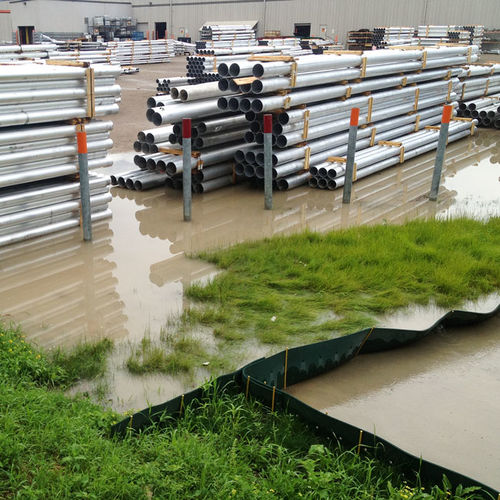
ISW Digital Document Library
About the Digital Document Library
Welcome to the Minnesota Pollution Control Agency's industrial stormwater Digital Document Library! The ISW DDL is a space for staff of industrial facilities and other state's stormwater programs to share example documents that are being used to implement best management practices (BMPs) or protect stormwater from pollutants. All documents in the ISW are free for anyone to use. Just download a document you're interested in, tailor it to your facility, and begin improving water quality at your facility. In the ISW DDL, you'll find inspection and checklists and forms, site plan review checklists, documentation tracking mechanisms, standard operating procedures, and many more useful materials to help you implement your stormwater management program.
We believe that having example documents will reduce the resources (staff time, financial, etc.) required to implement effective stormwater programs. We welcome your feedback! Send suggestions to: Melissa Wenzel.
Search by topic area
To find what you're looking for, go to the appropriate topic area below.
- Applicablity Industrial facilities need to determine if they need industrial stormwater permit coverage. Any facility that is engaged in regulated narrative activity or a regulated primary SIC code needs to apply for permit coverage or certify for No Exposure.
- No Exposure Consider keeping all materials and activities indoors and save time, money, and resources!
- Stormwater control measures Identify stormwater management practices (also known as Best Management Practices or BMPs) that you will install at your facility is a SWPPP requirement.
- Stormwater pollution prevention plan (SWPPP) - The SWPPP is your plan and guide to understanding and managing stormwater runoff.
- Training Employee training should be a major component of any SWPPP. Employee training is also an integral part of other control measures and may be done in conjunction with other training programs.
- Sampling requirements Permittees are required to sample quarterly until results from four separate quarters average below the permit benchmark value(s).
- Miscellaneous -This section will provide tips and suggestions to common problems, violations and facility-specific challenges.
Search by document category
Or, search by industrial sector:
- Sector A: Timber Products
- Sector B: Paper and Allied Products Manufacturing
- Sector C: Chemical and Allied Products Manufacturing
- Sector D: Asphalt Paving and Roofing Materials and Lubricant Manufacturing
- Sector E: Glass, Clay, Cement, Concrete, and Gypsum Products
- Sector F: Primary Metals
- Sector G
- Sector H
- Sector I
- Sector J
- Sector K
- Sector L
- Sector M
- Sector N
- Sector O
- Sector P
- Sector Q
- Sector R
- Sector S
- Sector T
- Sector U
- Sector V
- Sector W
- Sector X
- Sector Y
- Sector Z
- Sector AA
- Sector AB
- Sector AC
==Acknowledgements==
We'd like to thank those who have contributed to these materials within the library, including:
- Colorado Department of Public Health and Environment
- Connecticut Department of Energy and Environmental Protection
- Delaware Department of Natural Resources
- Environmental Protection Agency
- Georgia Environmental Compliance Assistance Program
- Maryland Department of the Environment
- Michigan Department of Environmental Quality
- Minnesota Pollution Control Agency’s Small Business Environmental Assistance Program
- Missouri Department of Natural Resources
- New Jersey Department of Environmental Protection
- Oregon Department of Environmental Quality
- Portland, Oregon
- Printer’s National Environmental Assistance Center (PNEAC)
- Sacramento Stormwater Management Program
- University of Minnesota Erosion and Stormwater Management Certification Program
- University of Minnesota Extension Service stormwater education program
- US Department of Transportation
- Utah Department of Environmental Quality
- Washington Department of Ecology
- Wisconsin Department of Natural Resources
